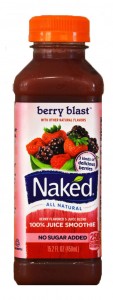The line between fact and fiction gets blurry with health trends
Health food is everywhere these days, and it can be hard to keep up with what’s fact and fiction. The Knight Errant has investigated some of the most common health food myths, and suggested recommendations to kick those not-so-healthy habits.
Naked Juice:
Recently settling a lawsuit regarding the all-natural claim made by “Naked Juice,” Pepsi Co. shelled out $9 Million for deceptive labeling. No longer bearing the “All Natural” label and possibly ditching its non-genetically modified status, Naked Juice’s days on the health food pedestal may be waning. While especially popular among teens as a “meal replacement,” or “healthy breakfast,” it may be time to set down the bottle and pick up an apple instead. Sacrificing a large majority of the beneficial vitamins and minerals in the pasteurization process, as well as fiber from the filtering, Naked Juice is left with a consistent texture, sugary taste, and all too unnatural color.
Recommendation: Instead of spending $4 on a sugar-loaded and processed drink, switch over to a raw and unfiltered juice from a juice bar, or local health food store. Similar in price, you’ll pack a much heavier nutritional punch for the same caloric dollar.
Granola Bars:
Another snack that gets most students through the day are granola bars. They’re a convenient pick-me-up that is unfortunately not very convenient health-wise. While it may satiate that need for a kick of energy, most granola bars come laden with the same amount of sugar, calories, and fat as your average candy bar. The healthy whole grains advertised on the box are usually conglomerated together with high fructose corn syrup and other sugary syrups that make any nutritious value present pretty much obsolete. So whenever you’re craving sugar and reach for the granola bar as the healthier alternative, you might as well eat the Snickers; it’s got the same lack of nutrition and is probably more satisfying.
Recommendation: Contrary to popular belief, taste doesn’t always have to be compromised when seeking the most nutritious granola bar. Look for granola bars that are less than 6 grams of fat, and lower than 10 grams of sugar. But more importantly are the amount of vitamins, minerals, fiber, and protein. KIND Bars and Larabars are some of our favorites, for their advantageous nutrition, great taste, and readable ingredients.
Yoplait Yogurt:
When reaching for a healthy snack, it’s natural to go for yogurt. It’s full of beneficial probiotics, low in fat, and high in calcium so, why not? Well think again. The top yogurt brand in America, Yoplait, is the key example of how the food industry manipulates foods that should be healthy. Many are not aware that their daily Yoplait fix may be 99% fat free, but contains exorbitant amounts of sugar to compensate for that extracted fat– a stifling 26 grams to be exact. And although they’ve been publicising their removal of high fructose corn syrup from their products, there are still plenty of artificial flavors and coloring.
Recommendation: The less-recognized Australian yogurt brand, Noosa, offers great flavor and texture with less than half of the sugar than Yoplait, clocking in at 11.5 grams per serving. Another way to cut out the sugars and calories of yogurt while still getting the same satisfying effect is to substitute a sweet, vanilla coconut or almond milk for yogurt, and add in some fresh berries for an extra vitamin boost.
Greek Yogurt:
Higher in protein than regular yogurt due to its thick and creamy consistency, Greek yogurt is one of the hottest health foods on the market. Although packed with protein, that keeps you satisfied, there are some downsides thanks to its mass appeal and popularization. Unfortunately, many companies have added artificial flavorings and preservatives, and piling on the artificial sweeteners, making it about the nutritional equivalent to your favorite ice cream.
Recommendation: Stray away from the mainstream brands of Yoplait and Dannon, and branch out to the organic and non-dairy varieties, such as Fage and So Delicious. Lower in fat, free of much of the preservatives, and still great tasting, these Greek alternatives are sure to make you, and your body happy.
Peanut Butter:
The perfect accompaniment to your morning bagel, or a great protein boost to your smoothie in the morning, peanut butter is an American staple. High in fat and laden with hydrogenated oils and sugar, it’s not the most nutritious option to add to your morning routine due to the combination of both proteins and fats, which makes it the most unhealthy combination of food groups for those watching their diet. With 130 of its 190 calories coming from fat, your average peanut butter isn’t the health food we all thought it was.
Recommendation: Almond butter is a great alternative for those with peanut allergies, or health conscious individuals alike. Although similar in nutritional content with peanut butter, almond butter is more likely to be organic and have fewer additives and preservatives. Try it with apple slices for a fall favorite.
Pita Chips:
The perfect partner to a bowl full of hummus, pita chips have dipped their way into the health food world. While typically fried, even if baked, pita chips do a lot more bad than they do good. Often thought of as a healthy alternative to other chips, pita chips are actually negative calories, meaning they provide no nutrition. Containing around 130 calories in a mere ten chips, they’re similar in nutritional facts to your average potato chip – which is likely a more pleasant option.
Recommendation: A great alternative to dipping negative calories in your nutritious hummus is to swap out the pita chips for some carrot, or bell pepper sticks. If you’re craving that salty, crisp bite, try kale chips, one of the biggest new trends, or for those feeling a bit more exotic, dried and salted nori, a japanese favorite.
White Rice:
Great in sushi, or as a complement to your Asian or Hispanic inspired meal, white rice is a staple for millions around the world. While a cheap and tasty side, it’s not the most nutritious option, since it’s a negative calorie food. Countless studies have shown that a serving of white rice is the equivalent to two slices of white bread, which we all know is the nutritional equivalent to cardboard.
Recommendation: An easy swap for your bowl of cardboard is to switch to brown rice, or even better: quinoa. High in fiber, protein, and plenty more nutrients, these unique grains are the perfect nutritional side to your next meal.












































